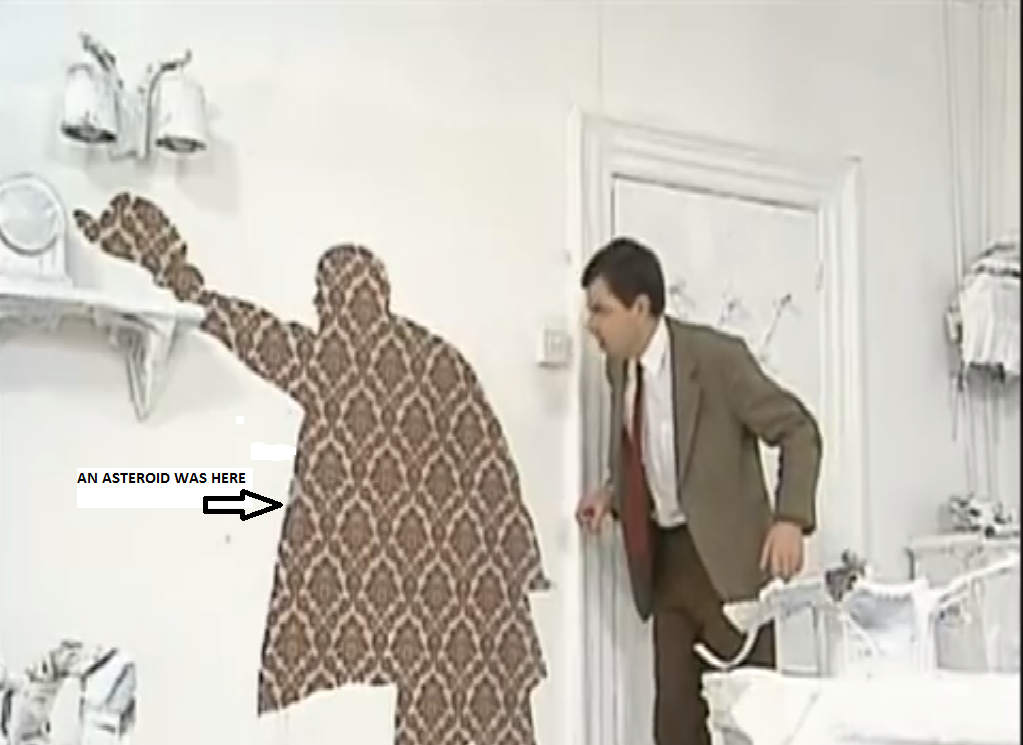How to Kill an Asteroid? Get out a Paint Spray Gun

Dave Hyland, professor of physics and astronomy and also a faculty member in the aerospace engineering department at Texas A&M and a researcher with more than 30 years of awards and notable grants, says one possible way to avert an asteroid collision with Earth is by using a process called "tribocharging powder dispensing" -- as in high pressured -- and spreading a thin layer of paint on an approaching asteroid, such as the one named DA14 that came within 17,000 miles on Feb. 15.
What happens is that the paint changes the amount by which the asteroid reflects sunlight, Hyland theorizes, producing a change in what is called the Yarkovski effect (which was discovered by a Russian engineer in 1902). The force arises because on a spinning asteroid, the dusk side is warmer than the dawn side and emits more thermal photons, each photon carrying a small momentum. The unequal heating of the asteroid results in a net force strong enough to cause the asteroid to shift from its current orbit, Hyland further theorizes.
The kind of paint used is not the kind found at your local hardware store, Hyland explains. "It could not be a water-based or oil-based paint because it would probably explode within seconds of it entering space," he notes.
"But a powdered form of paint could be used to dust on the asteroid and the sun would then do the rest. It cures the paint to give a smooth coating, and would change the unequal heating of the asteroid so that it would be forced off its current path and placed on either a higher or lower orbit, thus missing Earth.
"I have to admit the concept does sound strange, but the odds are very high that such a plan would be successful and would be relatively inexpensive. The science behind the theory is sound. We need to test it in space."
As for getting the paint on the asteroid, a practical way to do this was discovered by a former student of Hyland's, Shen Ge, who has since started a new space company. The "tribocharging powder dispenser" would spray a mixture of inert gas and charged dry-paint powder at the asteroid that would attract the powder to its surface through electrostatics. Then solar wind and UV radiation would cure the powder, giving a smooth, thin coat on the surface.
Getting the paint in the asteroid's path in a timely manner will certainly be a challenge, Hyland observes.
Easy Math Editor
This discussion board is a place to discuss our Daily Challenges and the math and science related to those challenges. Explanations are more than just a solution — they should explain the steps and thinking strategies that you used to obtain the solution. Comments should further the discussion of math and science.
When posting on Brilliant:
*italics*or_italics_**bold**or__bold__paragraph 1
paragraph 2
[example link](https://brilliant.org)> This is a quote# I indented these lines # 4 spaces, and now they show # up as a code block. print "hello world"\(...\)or\[...\]to ensure proper formatting.2 \times 32^{34}a_{i-1}\frac{2}{3}\sqrt{2}\sum_{i=1}^3\sin \theta\boxed{123}Comments
There are no comments in this discussion.